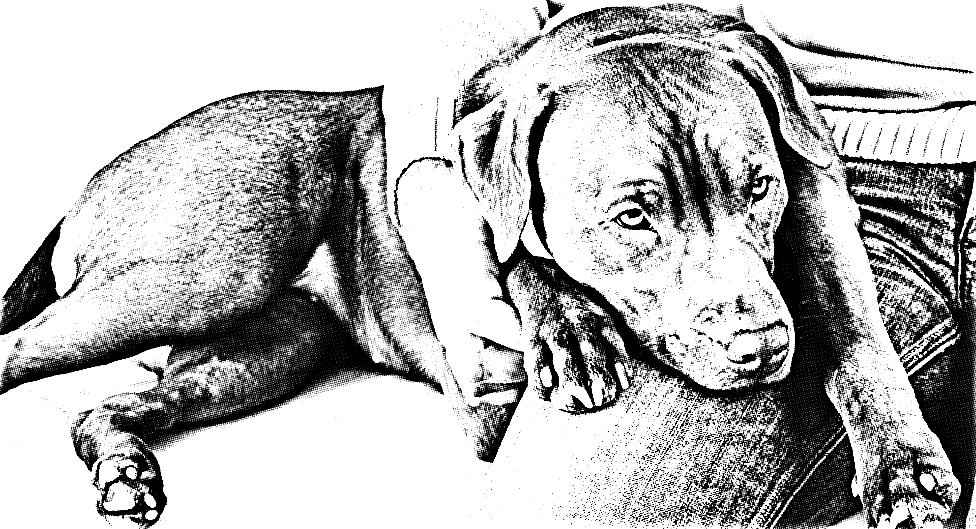Dominant or dominant aggression?

Over the years I have heard many discussions relating to dominant dogs. Some of it well informed, some of it not. Far too many so-called ‘experts’ are still pushing the idea of using the ‘alpha roll,’ forcing a dog onto its back. For me, there is no room for this type of thing. Dominating our dogs in such a way is, potentially, damaging for us and our dogs. We, are, in fact showing aggression to our dogs and ‘forcing’ them to submit. This can result in behavioural problems developing. However, this is not the main point of this piece.
There are differences between a dominant dog and a dominantly aggressive dog.
Dominant dogs can be pushy, can talk back, and can snort at people, but are never aggressive. They are pushy. There is no evidence that pushy puppies will become the dominant dogs in a household grouping of dogs, and there is no evidence that pushy dogs become dominantly aggressive.
Pushiness or dominance is a personality style. In fact, many people prefer pushy or dominant dogs because they work well in obedience situations and because some people believe that these dogs are personality plus. Regardless, they should never be inappropriately aggressive.
Dominance aggression usually develops at social maturity. This generally occurs between 18 and 36 months of age in dogs, although it can occur later or earlier and still be normal. This explains why your dog may be perfectly normal as a puppy and then at about 2 years of age seem to suddenly change.
By definition, dominance aggression is a manifestation of inappropriate, out-of-context responses to specific situations related to control.
Here is an example of dominance aggression. I was visiting a friend quite a few years ago and experienced an interesting situation. He had a fairly large German Sheppard Cross. On this occasion, he came to me where I was sitting and placed his head, firmly, on my lap. “Aw, he likes you,” said my friend. This wasn’t the case. I had learnt from my Father-in-law, an ex-Metropolitan Police dog handler, something about certain dog behaviour (this incident happened before I retrained as a canine behaviourist). Indeed, his police dog would often lean against a suspect and push them; he was trying to get them to respond, whereby, he would sink his teeth into them. My friend’s dog was doing the same. This was a dominantly aggressive move, if I hadn’t been aware, he may well have bitten me.
Dominantly aggressive dogs routinely dislike being pushed from a sofa or a bed, will act aggressively when humans stare at them, dislike having their shoulders or back pushed on, and may react aggressively when someone reaches over their head (even if this is only to put on a leash), may become aggressive when orally corrected or with a leash, and intensify their aggression if physically punished.
Many such dogs are quite subtle and cause owners to redirect their activities. These dogs will lie in front of doors or furniture so that the person has to avoid those areas and may lean against or have a paw resting on the owner at every opportunity. Owners can learn to carefully test and determine whether the dogs’ response is appropriate in the specific context.
Understanding the difference between a dominant, pushy dog and a dominantly aggressive dog is important. If dominant aggression isn’t handled properly it can become dangerous. In fact, dominant aggression is a very common problem that behaviourists are asked to help with.
If a dog leans against you simply to get attention, you should be able to physically move the dog without the dog becoming aggressive. This may be too risky a test for some dogs that are thought to be dominantly aggressive. Owners can learn to look for more subtle cues. Dogs that lean on you to be close or for attention do not stiffen, open their eyes, and then move so that they are again touching or pressing on you; most dominantly aggressive dogs do.
Dogs that are seeking closeness usually respond to verbal cues to get off or down and then use solicitous behaviour (turning their head on their side, rolling over, whining, wagging their tail, putting their ears loosely back, and so on).
Dogs with dominance aggression may talk back, become stiffer, or become aggressive. Caution is urged.
If you think your dog is displaying signs of dominance aggression, I would urge you to seek the help of a qualified canine behaviourist as soon as possible.
